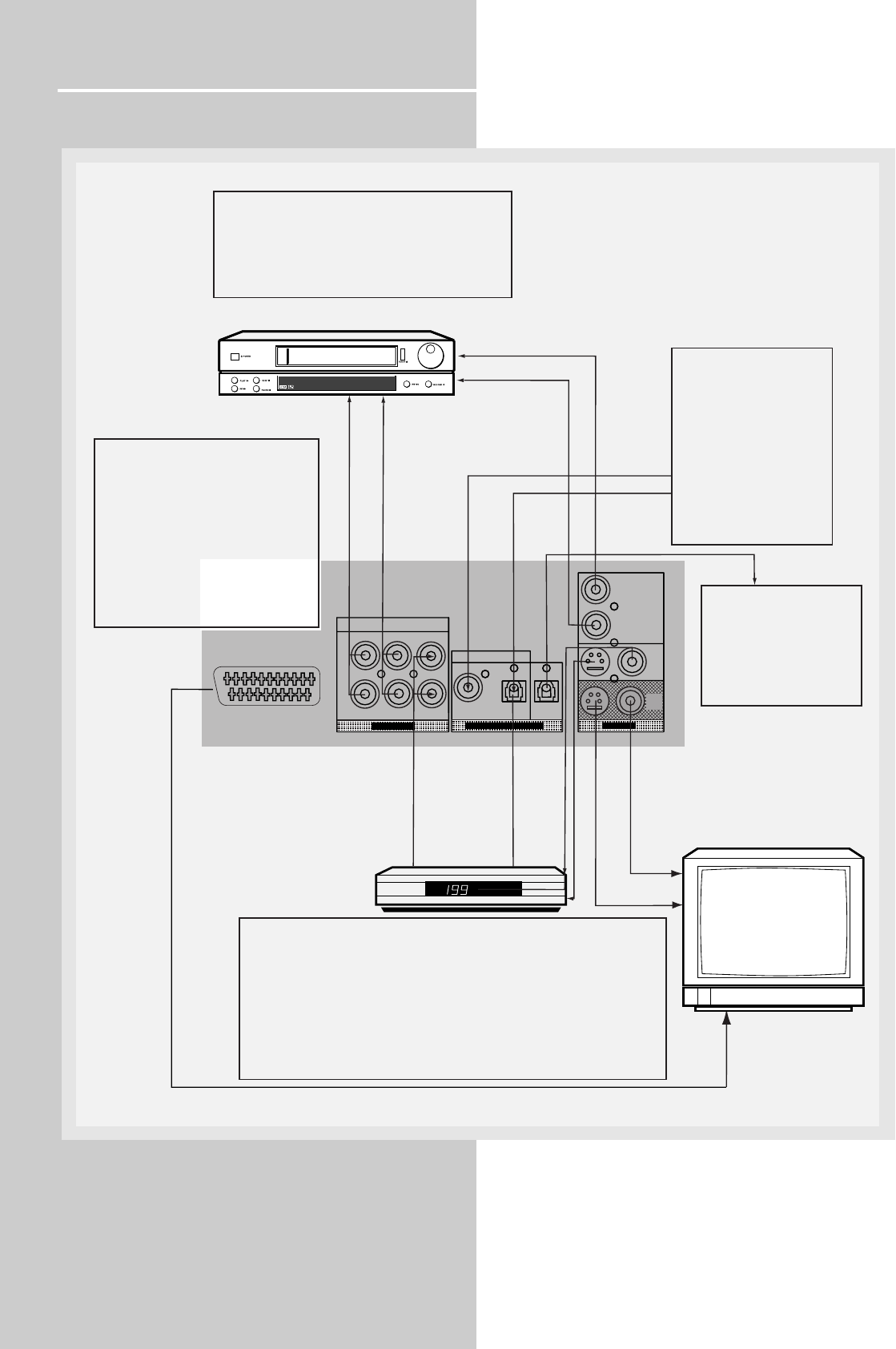
Getting Started
Connecting to Audio-Visual Components
4
L
IN OUT IN
R
SAT
IN
VCR IN
VCR OUT
VCR SAT
COAXIAL
IN
OPTICAL
IN
SAT
OPTICAL
OUT
DIGITAL AUDIO
TV
to VIDEO OUT (VCR)
to AUDIO OUT (VCR)
SAT
to VIDEO IN (VCR)
to AUDIO IN (VCR)
VIDEO
AUDIO
DIGITAL AUDIO
AUDIO OUT (SAT)
DIGITAL INPUT
Connect components
capable of outputing
Dolby Digital (e.g. SAT)
or standard PCM (CD)
format digital signals.
Read section on "Input
Signal Setting" under
"Advanced Sound
Control" carefully to
adjust the matching
input settings.
to S-VIDEO IN (if available)
to VIDEO IN (TV)
VCR
DIGITAL OUTPUT
Connect components
capable of recording
digital signals (e.g. MD,
CD recorder player)
equiped with a optical
input.
S-VIDEO
S-video provides the best connection for the video portion of the signal.
When connecting S-video cable, a Composite video cable (yellow RCA
connector) must also be used. If you use a S-video cable to connect
any audio-visual components to your DVD receiver, you must also use
a S-video cable between your TV and receiver.
¥ VCR audio/video out will have output signal in SAT, DVD/CD and
TUNER modes. When VCR (source) is selected, there will be no
audio/video signal from VCR audio/video out.
OPTICAL OUT (SAT)
to VIDEO OUT (SAT)
to S-VIDEO OUT (if available)
ANALOG INPUT
Alternatively, if you have no VCR or SAT, you can
connect any other compatible components like
TAPE player, TV to your DVD receiver via the
VCR/SAT input.
TV
MON
OUT
to SCART AUDIO / VIDEO IN (TV)
TV SCART INPUT
Connect the TV to the DVD receiver
with a SCART cable. Audio from
any components which are
connected to the TV (e.g. VCR) as
well as the TV itself will be
broadcasted through the system.
When the DPL900VD is turned on
in DVD/CD mode, the TV will
automatically switch to the correct
input (e.g. AV1).
VCR


















